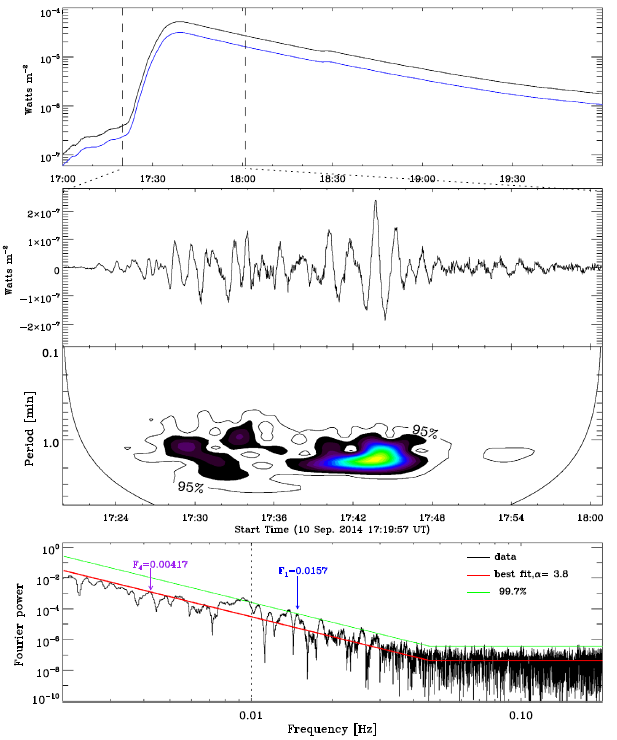We have explored the quasi-periodic pulsations (QPPs) in the 2014 Sep.10 solar flare that was detected by the Geostationary Operational Environmental Satellites (GOES), the Atmospheric Imaging Assembly (AIA) and the Extreme Ultraviolet Variability Experiment (EVE) onboard the Solar Dynamics Observatory (SDO), and the Gamma Ray Burst Monitor (GBM) onboard the Fermi satellite. Previous studies have found that this flare displays four-minute QPPs in a broad range of wavelengths. In this article, we find that this event also shows QPPs with a period of around one minute. Using the Fast Fourier Transform (FFT) method, the light curves are decomposed into fast- and slowly varying components with a separation at ≈100 seconds as shown in Fig1. The four-minute QPPs are in the slowly varying component, and the one minute QPPs are identified with the fast-varying components from the impulsive to maximum phases in soft X-rays (SXR), extreme ultraviolet (EUV), and hard X-ray (HXR) emission simultaneously. High correlations are found between the fast-varying components at the different wavelengths, especially between SXR and HXR. The four-minute QPPs appear in the whole flare region, while the one-minute QPPs tend to originate from the flare loop footpoints. This finding provides an observational constraint for the physical origin of the QPPs. 
Figure 1 Top: GOES soft X-ray light curve (black) and the slowly-varying component (blue) for the 2014 Sep. 10 solar flare. Second: the fast-varying component. Third: the wavelet spectra of the fast-varying component. Bottom: Fast Fourier Transform of the GOES light curvewith the vertical dotted line marking the position (at the frequency of 0.01 Hz) that separates the domains of the fast- and slowly varying components. The red solid line is the best fit, and the green line shows the confidence level at 99.7 %. Two frequencies of 0.0157 Hz (about one minute) and 0.00417 Hz (about four minutes) are marked by blue and purple arrows, respectively The research work by NING Zongjun has been published in Solar Physics (Sol Phys (2017) 292: 11.). For more details please see: http://link.springer.com/article/10.1007/s11207-016-1037-4 |
